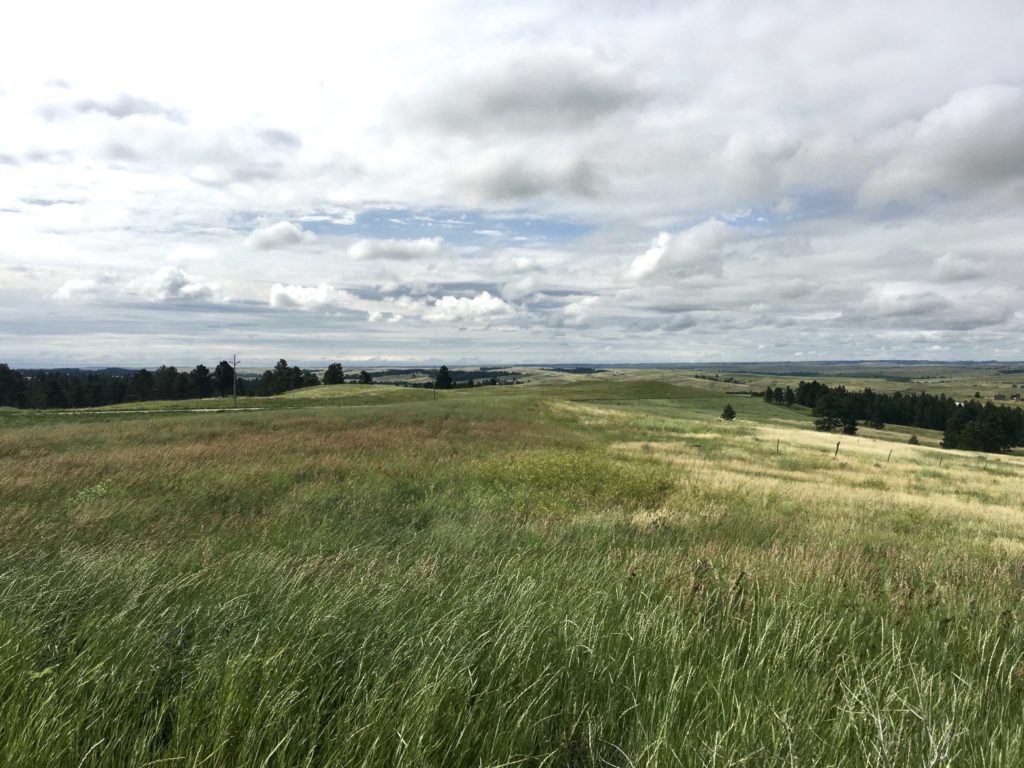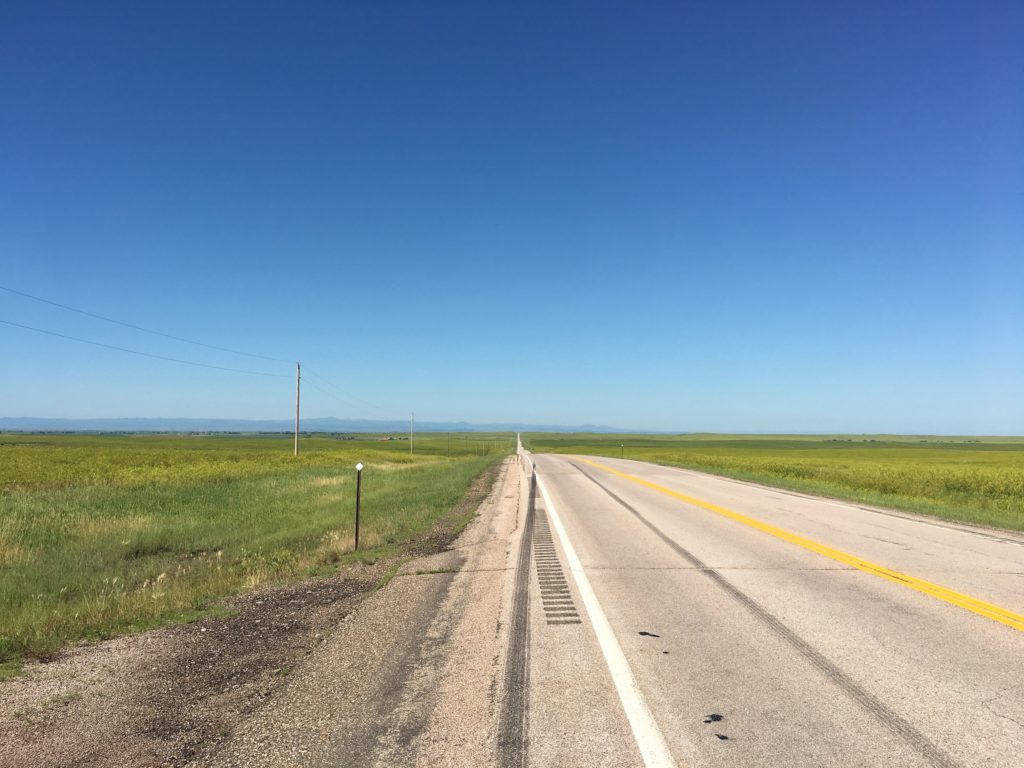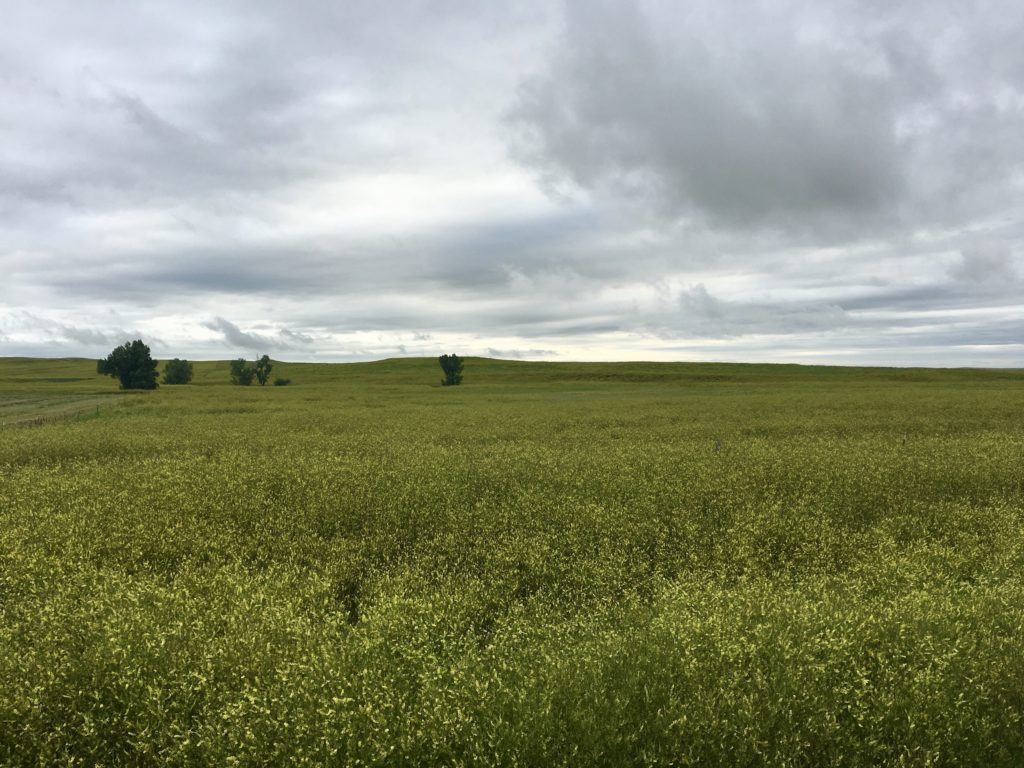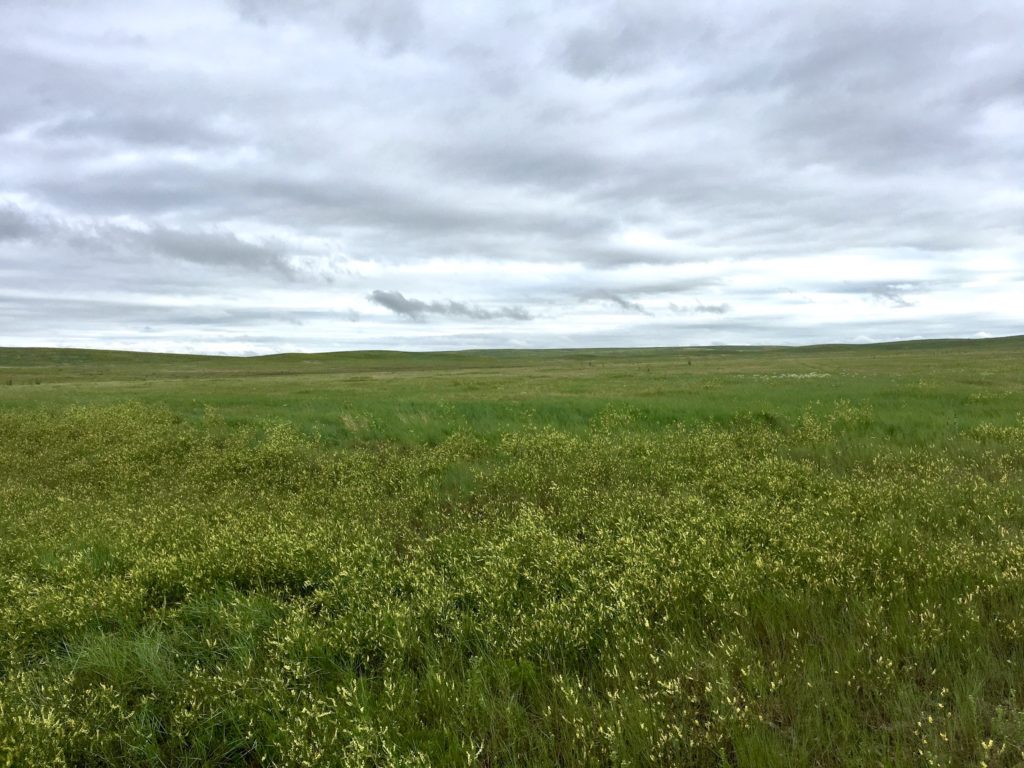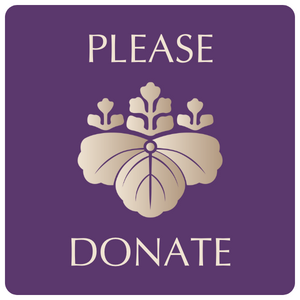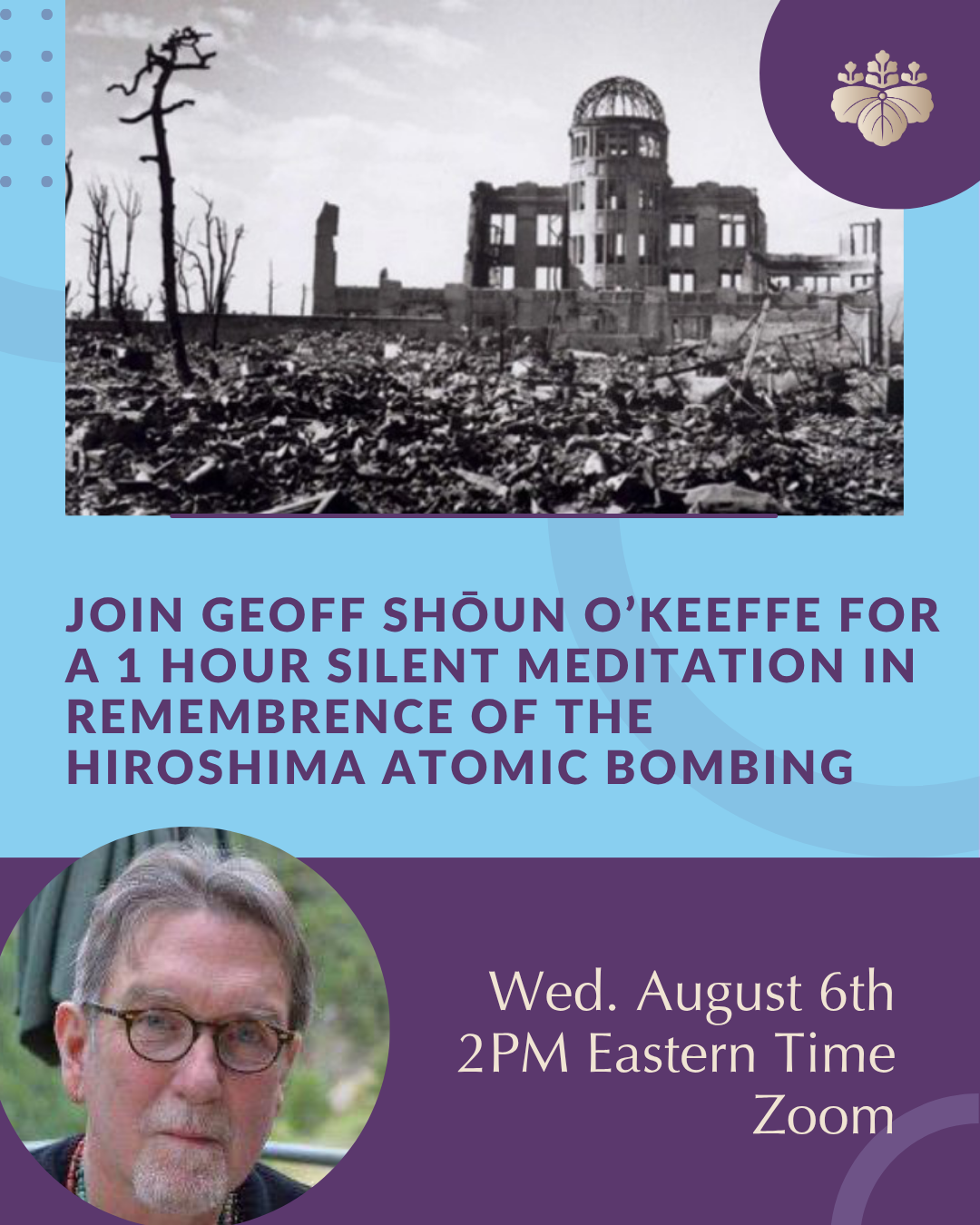ZPI encourages reflections from retreat participants, staff, members & others touched by our work and doing similar work from around the world, as part of the practice of bearing witness. Peter Pierson, a writer and a participant in the Native American Bearing Witness Plunge in 2019, offers us a reflective writing piece that shares a bit about how the practice of «Not Knowing» remained with him throughout his return home, long after the retreat had come to an end.
As my time on the Cheyenne River Reservation ended, I looked at the map. One of the routes I could take home would take me through Pine Ridge, just south of Wounded Knee. I’d been there before, years ago. I wanted to see and feel it again.
The sun was getting low in the sky when I left Eagle Butte. A hot prairie wind buffeted the car as the Rez radio I’d been picking up out of Standing Rock faded to static. After a cup of gas station coffee in Rapid City, I drove until sleepiness got the better of me. I pulled into the casino hotel west of Pine Ridge and got a room for the night.
The next morning, I got on the road and drove across more rolling prairie. Heavy, low clouds brushed across the hills. I stopped at a convenience store in Pine Ridge to top off the tank and get some breakfast. A smiling Native kid, maybe eighteen, behind the food counter greeted me with “Híŋhaŋni wašté. What will you have?”
His cohort working the grill laughed. “He thinks he’s the shits. He’s in a Lakota class, and is trying it out on everyone who comes in here.”
“What does that mean?” I asked, and repeated, phonetically, “Ee-hah-nah wash-tay?”
“Good morning,” he answered, quite pleased to share.
I ordered a breakfast sandwich, and ended up with more food than I’d need all day, eating one in the parking lot and sharing the rest with a man who hit me up for a couple bucks that I really did not have.
The clouds broke as I drove north to Wounded Knee. I pulled into the parking area at the memorial to the 1890 Massacre. I pushed against the wind to open the car door. An older Native American woman sitting behind a table with information and beadwork for sale had the attention of a white couple, the only other visitors that morning. I heard her tell the couple the history of the place, of how the United States 7th Cavalry opened fire on freezing, starving Lakota men, women, and children, killing some 300. She told a story of how U.S. soldiers were paid for the scalps and ears of adults, and the hands and feet of the children and infants.
A younger man was burning a bundle of sage, smudging, bowing over the rising smoke, brushing it over his head and body. I waited for him to finish. “Híŋhaŋni wašté,” rolled off my tongue before I could catch it and consider my intent.
He looked me over.
“With all due respect,” I asked, nodding to the burning sage. “May I?”
He motioned that yes, I could share in the smoke. I leaned forward and drew the smoke over my head and down my body. I walked across the road and started up the hill to the memorial site. On top, I was alone. Brightly colored prayer flags fluttered along the fence surrounding the sparse burial grounds. There was not a sound, not a passing car, not a voice. Just the wind.
On my way back down the hill, I met the couple I’d seen at the information tables. They stopped, looking a bit shaken. “Have you been here before?” the man asked, his voice lowered in respect to the place.
“It’s been a while, but yes, I’ve been here.”
“You look like you know what to do here. I’m—,” he paused. “I just don’t want to do anything wrong.”
I thought for a moment. “You’re okay, I told them. “Just go up with an open heart. Just be here.”
They looked up the hill, then at each other, and made their way up.
———
This not knowing what to do in these places, in these moments, was something I knew myself. Spending much of my life around reservations and Native communities, I’d come to feel how the drumming and singing at pow wows cut right through me and struck something, some place, deep, to the core. I questioned, though, what place I had, or should have, in such things.
Work in education and employment programs on the reservations of the Minnesota Chippewa Tribe led to my slowly being invited to banquets and pow wows, then into peoples’ homes. I felt self-conscious when conversations turned to injustice and action. My place seemed to be best defined by my uneasy silence.
My work evolved to that of paramedic, where ambulance runs reached parts of the Leech Lake Reservation in Minnesota, then a brief stint on the pre-oil boom Fort Berthold Reservation (Mandan-Hidatsa-Arikara) in North Dakota. Working air ambulance in remote Alaska, families in Savoonga and Anaktuvuk Pass thanked us with bags of muktuk, wedges of the skin and blubber of the whales they harvest on a limited basis under the Alaska Native Exception to federal regulations. I shared some of the most intimate moments of life and death with the people who draw their relationships with place, with land and landscape, not in generations, but in their living, in their creation stories, and in creation itself.
I was in it. The questions of my role in these places, though, lingered and grew.
My questions brought me back to a lapsed Zen practice, and to South Dakota and the Cheyenne River Lakota with Zen Peacemakers International (ZPI). In the Three Tenets of engaged Buddhism in the practice of ZPI, of Not Knowing, Bearing Witness, and from these, Taking Action, the questions seemed to find a place to rest for a moment. Listening to our Lakota hosts, my silence was rooted not in uneasiness as it had been in the homes on reservations back in Minnesota, but from attention. In time, I shared my own story, of the questions I’d felt about my place, my role. When a moment presented itself, I asked our hosts for their thoughts.
“Just offer what gifts you do have,” they answered.
———
I watched the couple make their way up the hill to the Wounded Knee mass grave site, and then walked back to the covered area at the parking lot. I joined the woman who’d been telling stories of the history of the place. She spoke of the injustices her family and her people know and feel, then became quiet. She looked up the hill. “If you could,” she asked, “would you go back?” The wind blew. She looked at me. “If you could turn back time, would you go back? Would you?”
“I don’t know.” I answered. “I really don’t.”
The gift I had to offer in that moment was not a decisive action; nor, for that matter, was it inaction. The gift was not knowing. From that comes the space offered by simply being there in a place and in a moment that opens for the question to unfold.
I don’t know. And that is a very good place to start.
About the Author:
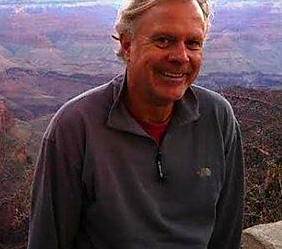 Bio: Peter Pierson has made home from northern Minnesota to Saskatchewan; Nome and Fairbanks, Alaska; and Prescott, Arizona. A one-time recipient of a Minnesota Arts Council/McKnight Fellowship, his memoir and nonfiction writing has been published in, among others, Minnesota Monthly, 5enses, Voices for the Land (Minnesota State Historical Society Press), and the The Ester (Alaska) Republic. His radio essay work has been produced and broadcast for KAXE/KBXE-Northern (Minnesota) Community Radio and CBC Radio One in Canada.
Bio: Peter Pierson has made home from northern Minnesota to Saskatchewan; Nome and Fairbanks, Alaska; and Prescott, Arizona. A one-time recipient of a Minnesota Arts Council/McKnight Fellowship, his memoir and nonfiction writing has been published in, among others, Minnesota Monthly, 5enses, Voices for the Land (Minnesota State Historical Society Press), and the The Ester (Alaska) Republic. His radio essay work has been produced and broadcast for KAXE/KBXE-Northern (Minnesota) Community Radio and CBC Radio One in Canada.
A participant in the 2019 Native American Bearing Witness program, Peter started his Zen practice and study some years ago with Dharma Field in Minneapolis, with Steve Hagen. He now resides in the Kansas City community, where he sits with a group of similarly oriented lay Zen practitioners.

